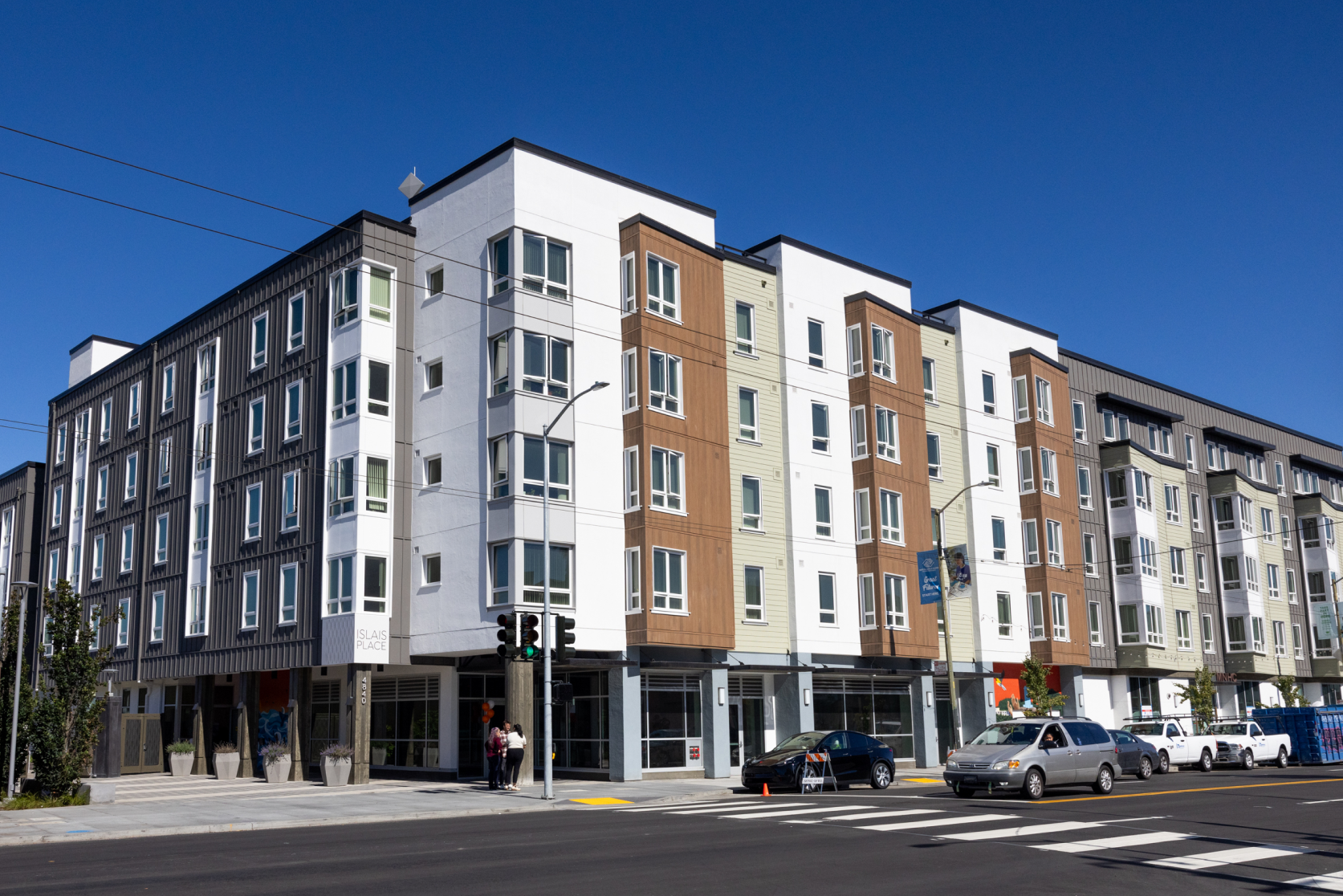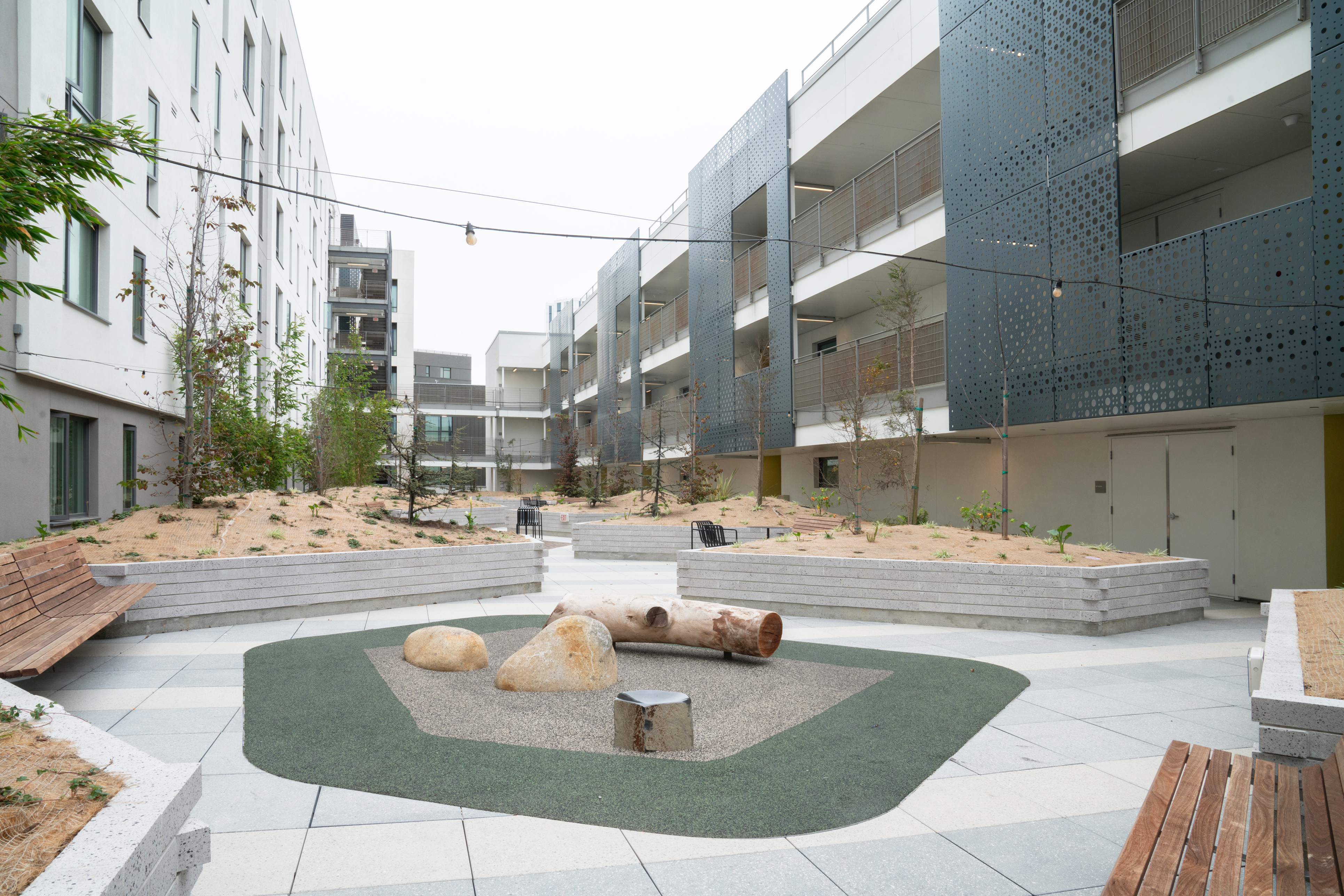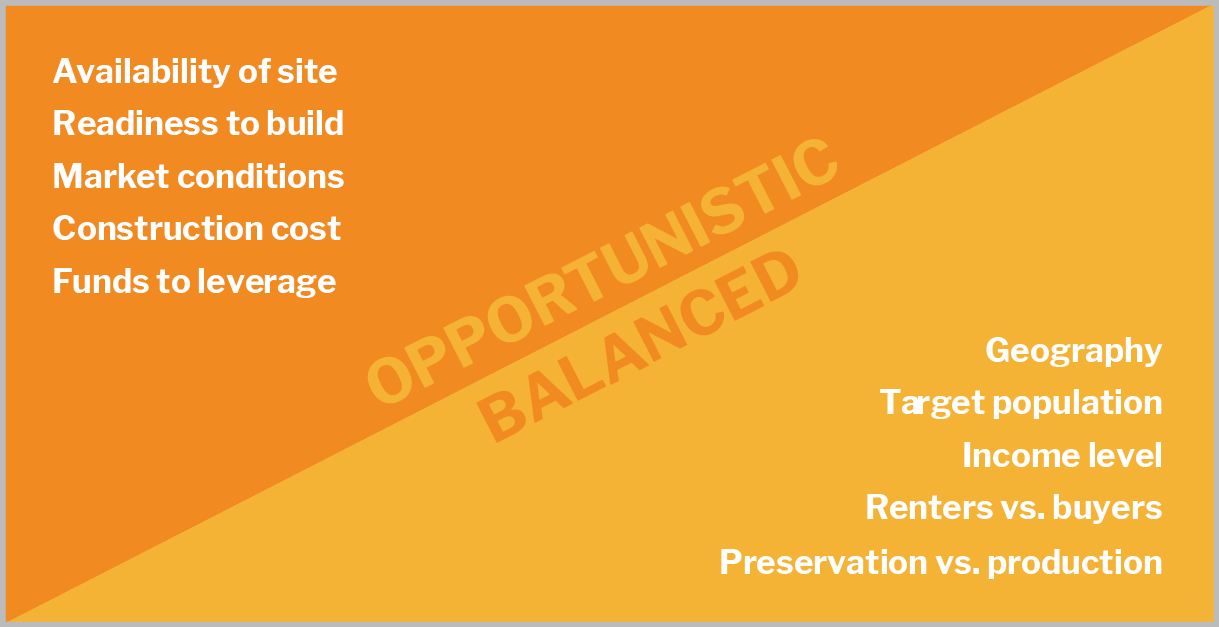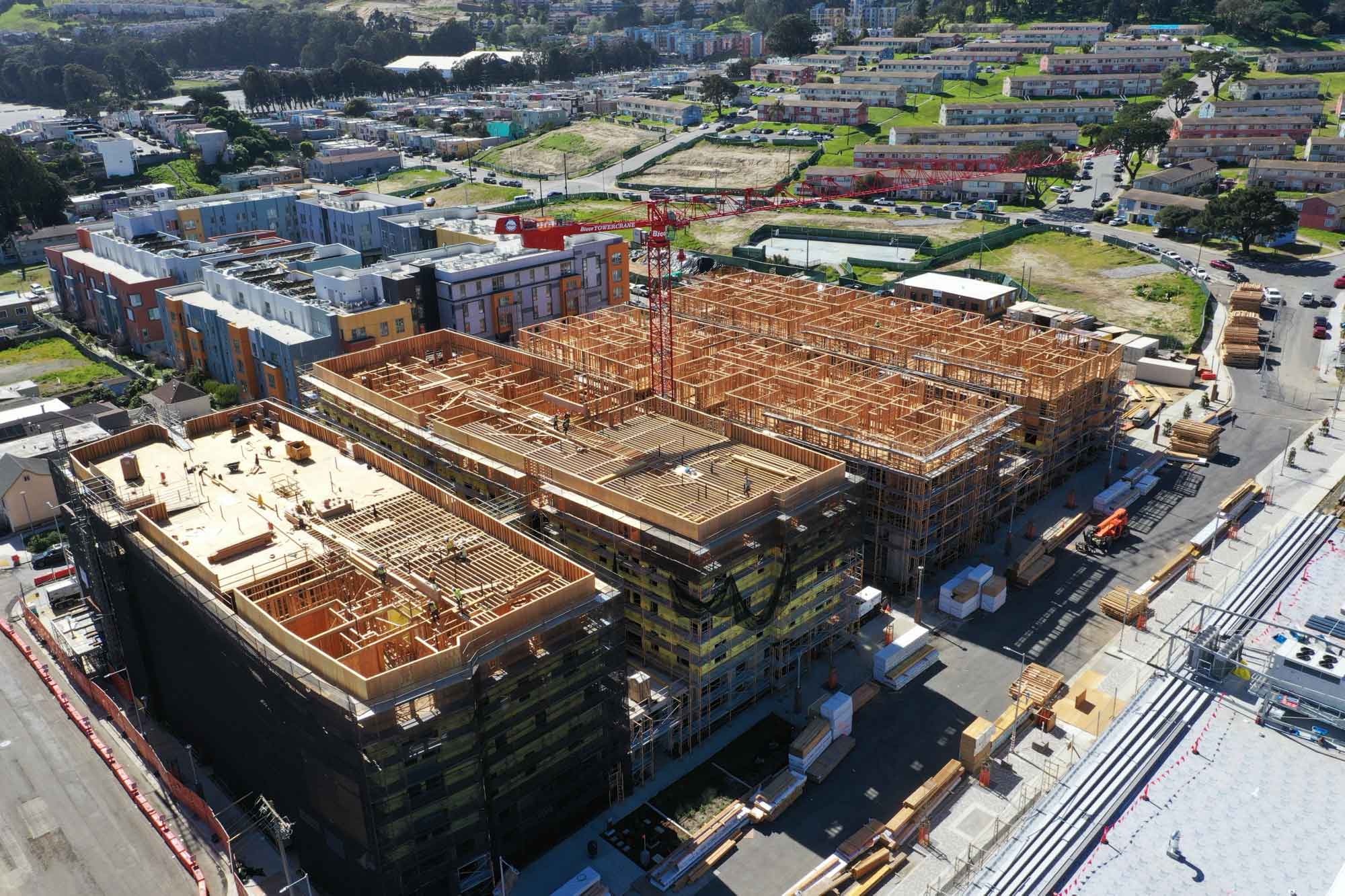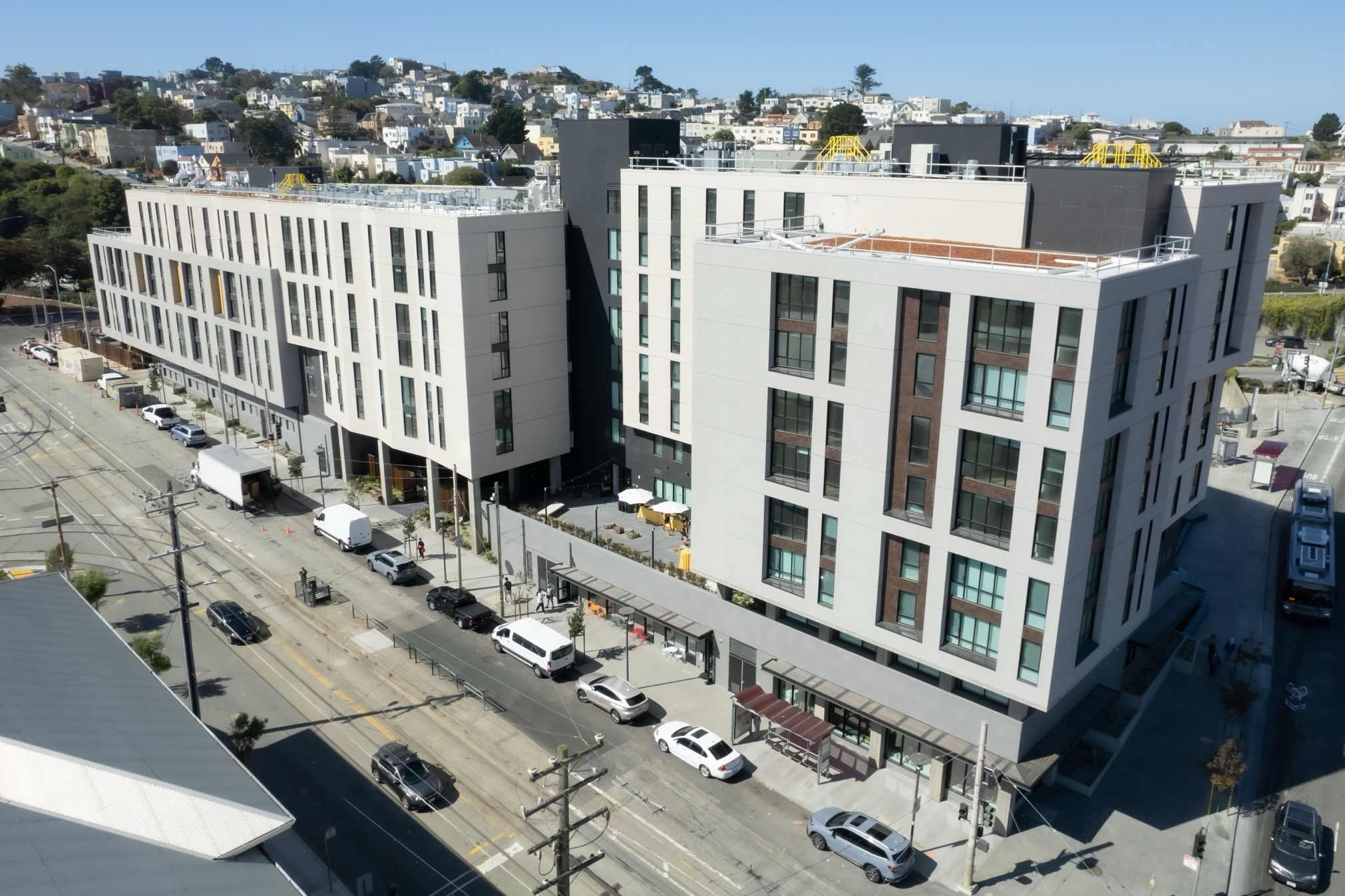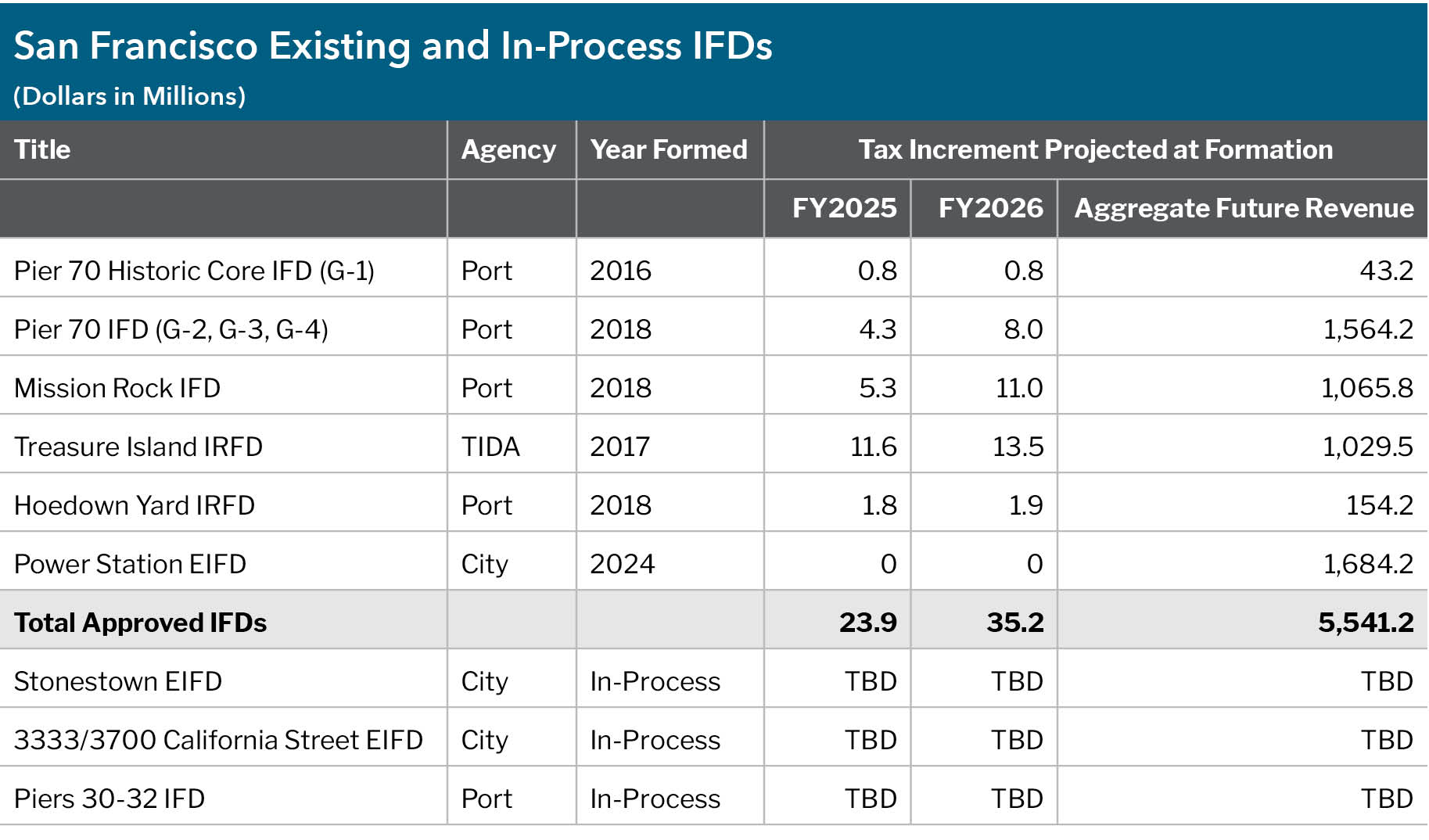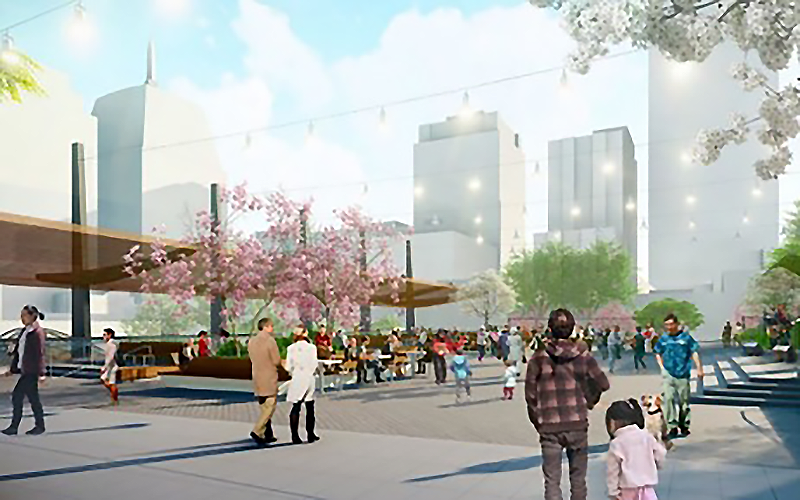2026 - Affordable Housing: Enhancement Projects / Production
|
Project Name |
Description |
|---|---|
| MOHCD – Very Low and Low Income Housing |
MOHCD’s planned projects include very low- and low-income housing that serve households between 0 and 80% AMI. Vulnerable populations served include formerly homeless individuals and families, transitional age youth, seniors, and families. An example of a very low- and low-income project in the pipeline is 2550 Irving. This project will include 90 units for individuals and families earning between 20-60% AMI, including 15 units for veterans. The building will include a mix of studios, 1-bedrooms, 2-bedrooms and 3-bedrooms; and 25% of the units will have two or more bedrooms for families. The ground floor will include residential community space, office space for the Sunset Chinese Cultural District, and a community meeting room. Construction started in spring 2024 and leasing will start in summer 2025. The majority of MOHCD’s funding sources support new housing production for very low- and low-income households, although some impact or Area Plan fees are limited to specific geographies. No Place Like Home funds from the State are restricted to chronically homeless individuals, and 60% of excess ERAF could be used for new construction. The estimated need to continue the City's level of effort to produce very low- and low-income housing units for the next decade is approximately $16 billion through FY2035. |
| MOHCD – Moderate Income Housing |
MOHCD’s planned projects include moderate income housing that serves households between 80-120% AMI. The populations served include moderate income individuals, families, and educators. An example of a moderate-income project in the pipeline is 921 Howard Street. This project includes 203 units for individuals and families earning from 70-110% AMI, and a mix of studios 1-bedrooms, 2-bedrooms and 3-bedrooms. Construction began in 2021 and the project celebrated its ribbon cutting in 2024. During the pandemic, significant market fluctuations affected the rentability of moderate-income units. The market for rental units changed dramatically as renters adjusted to pandemic working patterns, with market rate rental rates decreasing to close to the pricing for moderate-income units in some neighborhoods. In 2024, market rate rentals are still unstable, and demand is closely tied to neighborhood, unit size, amenities, and bedroom mix. Certain MOHCD sources of funding can be used for production of moderate-income rental housing, including 60% of excess ERAF allocated to MOHCD, portions of the 2015, 2019, and 2024 Affordable Housing G.O. Bonds, and the Housing Trust Fund, which allow for the acquisition, rehabilitation and new construction of rental units serving households up to 120% AMI. Additionally, the G.O. bonds allow for first-time homeownership assistance programs, serving households up to 175% AMI and educators up to 200% AMI, and the Housing Trust Fund allows for first-time homeownership assistance programs for households up to 120% AMI. The estimated need to continue the City's level of effort for production of moderate-income housing units for the next decade is approximately $6.6 billion through FY2035. |
| TIDA - Treasure Island Development Authority |
The Disposition and Development Agreement (DDA) Housing Plan and Financing Plan for Treasure Island set forth a strategic framework for funding 2,173 affordable housing units. Of these, 1,866 units are to be developed by the City, and the balance to be inclusionary units constructed by private Vertical Developers. Due to an escalation in costs since 2011, an increase in the number of affordable units to be delivered, and other changes, revised funding strategies will be required to close the resultant funding gap. In 2024, the Development Agreement, DDA, and Special Use District were amended to catalyze the development of the next stage of infrastructure in a moment when it would not otherwise be able to advance in a timely manner. One of the primary goals for the proposed DDA amendments was to bring fiscal resources to the project and revise provisions in the DDA that have economically constrained the Project. The City and Developer proposed to use General Fund Certificates of Participation (COP) to finance the next major stage of infrastructure development in the project (Stage 2), which was approved. This approval was subject to certain conditions, including that the 10-year Capital Plan demonstrates sufficient capacity for the Stage 2 financing in the COP program to fund the remaining costs of infrastructure in Stage 2. TIDA’s current Capital Plan focuses on financing the initial six 100% affordable housing developments encompassing an estimated 776 units and the Behavioral Health Building. It is anticipated that these projects should transition current eligible island residents to the replacement housing and add several hundred net new affordable units by 2030. |
| TIDA – Inclusionary
Affordable Projects |
Isle House, Hawkins, and 490 Avenue of the Palms are three (3) market rate housing developments recently completed or under construction on Treasure Island. The Isle House, a 250-unit market rate rental development with 24 inclusionary affordable units, received its Temporary Certificate of Occupancy (TCO) in June 2024. Hawkins, a 178-unit market rate rental development, and 490 Avenue of the Palms, a 148-unit market rate condominium development, are both under construction with TCO expected in December 2024 and May 2025, respectively. Hawkins includes nine (9) inclusionary affordable units, and 490 Avenue of the Palms includes seven (7). On Yerba Buena Island, 31 new market rate for-sale townhomes, and flats received TCO in early 2024. |
OCII – Hunters Point Shipyard Phase 1 |
In Hunters Point Shipyard Phase 1, OCII is completing 2 affordable projects on 3 blocks totaling 185 units (including managers’ units) in FY 24/25. There are 2 affordable sites remaining in Phase 1. The Hunters Point Shipyard Phase 1 DDA Housing Program designates sites for the development of OCII-sponsored affordable housing projects and establishes a maximum number of affordable units that may be funded (218). OCII only has authorization to finance the remaining balance of 33 units. OCII wishes to maximize the affordable housing capacity of these sites and therefore proposes funding an additional 111 units on the remaining 2 affordable sites using the Replacement Housing Obligation. The increased density will bring the total to 362 affordable units (including managers’ units). The individual projects will consist of family rental affordable housing for households earning up to 50% AMI. Funding from OCII for these units is approximately $12.5 million from the Hunters Point Shipyard Phase 1 funding obligation and $55.5 million from the Replacement Housing Obligation through FY2035. |
| OCII – Hunters Point Shipyard Phase 1/Candlestick Point |
The Candlestick Point project is expected to restart in 2025. Through FY2035, 747 affordable housing units among seven projects will be in various development stages (predevelopment, construction, completion and lease up) at Candlestick Point. The individual projects will consist primarily of family and some senior rental affordable housing for households earning up to 60% AMI. Funding from OCII for these units is approximately $358 million through FY2035. |
| OCII – Mission Bay South |
Through FY2035, 710 affordable housing units in four projects will be in various development stages (predevelopment, construction, completion, and lease up). The Mission Bay South Housing Program designates sites for the development of OCII-sponsored affordable housing projects and establishes a maximum number of affordable units (1,218) that may be developed. The Former Agency and OCII have developed most of the affordable units and OCII only has authorization to develop the remaining balance of 165 units. OCII wishes to maximize the affordable housing capacity of these sites and therefore proposes to fund an additional approximately 545 units on the remaining 2 affordable sites, Block 4E and Block 12W, using the Replacement Housing Obligation. These units will predominantly serve households earning from 30% to 60% AMI with a small number of units possibly serving households up to 90% AMI. Funding from OCII for these units is approximately $87 million from the Mission Bay South funding obligation (in FY 25/26, prior to the 10-year capital planning period) and $252 million from the Replacement Housing Obligation through FY2035. |
| OCII – Transbay Transit Center |
Through FY2035, approximately 425 affordable housing units in three projects will be in various development stages (predevelopment, construction, completion, and lease up) at the Transbay Transit Center. The individual projects consist of senior rental housing, family rental affordable housing, and affordable homeownership. These projects will serve households earning from 30% to 100% AMI. Some of the projects will include ground floor retail space and other related uses, such as childcare. Funding from OCII for these units is approximately $204.5 million through FY2035. |
|
OCII – Replacement |
Through FY2035, in addition to units funded from the Replacement Housing Obligation in OCII Project Areas, OCII plans to fund approximately 550 - 900 units outside of OCII Project Areas through Notices of Funding Availability in targeted areas, such as the Western Addition, where much Redevelopment era displacement occurred, and in collaboration with the Mayor’s Office of Housing and Community Development. Funding from OCII for these units is approximately $315 million through FY2035. |
| SFHA – Disposition Projects |
The Housing Authority is an important partner in the HOPE SF projects described in the Economic and Neighborhood Development chapter. To better support low-income residents in San Francisco, the Housing Authority converted the sites to Project Based Vouchers (PBV), then transferred ownership and management to a non-profit developer entity. The increased rent subsidies from the vouchers will enable the private owners to secure the additional resources needed to complete full rehabilitations of the sites. A combination of this financing with a public land trust in the form of a long-term ground lease and local developers is a public-private partnership consistent with SFHA’s re-envisioning. This structure ensures long-term affordability and oversight through the lend-lease structure, access to new funds not available to SFHA, and improved housing conditions. SFHA is also working on dispositions of other properties: scattered sites have been transferred through a disposition process to a nonprofit housing agency; and Plaza East will be disposed though a Rental Assistance (RAD) blend program. Disposing of these properties will allow the flow of funding needed to enhance the quality of life for the residents. SFHA is committed to protecting the rights of the current residents in these units and meeting all requirements pursuant to HUD’s public housing regulations. |
|
SFHA – Rental Assistance Demonstration (RAD) Program |
During Phases 1 and 2, 3,480 public housing units were converted to Project Based Vouchers (PBV) under RAD, addressing critical immediate and long-term rehabilitation needs and preserving affordability for very low-income residents by increasing revenue and attracting new capital. In addition to RAD, the financing strategy relies upon HUD’s Section 18 Disposition/Demolition program which has permitted the Housing Authority to obtain additional Housing Choice Vouchers to supplement the RAD program. During a third phase of RAD conversions for the HOPE VI sites, an additional 304 units were transferred to the new program by August 2022. All 39 RAD projects utilize private debt, equity generated by the Low-Income Housing Tax Credit program, and soft debt from the Housing Authority and the City and County of San Francisco. This approach has resulted in a $2.3 billion conversion project and generated $830 million in construction and rehabilitation work that benefits the tenants of Housing Authority sites while preserving existing affordability. |

